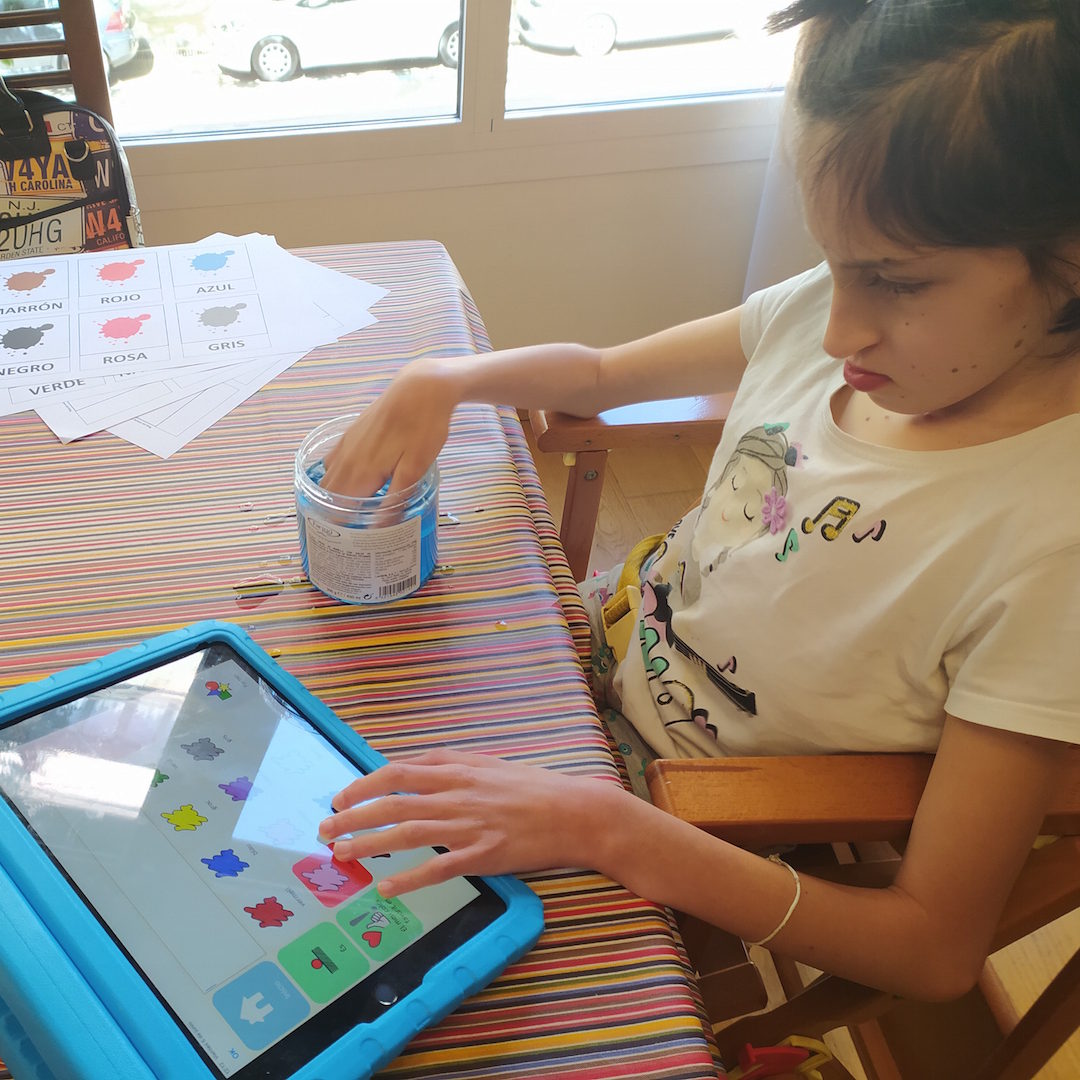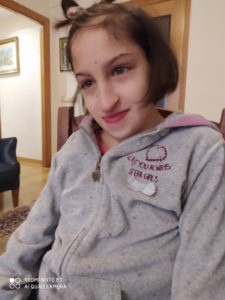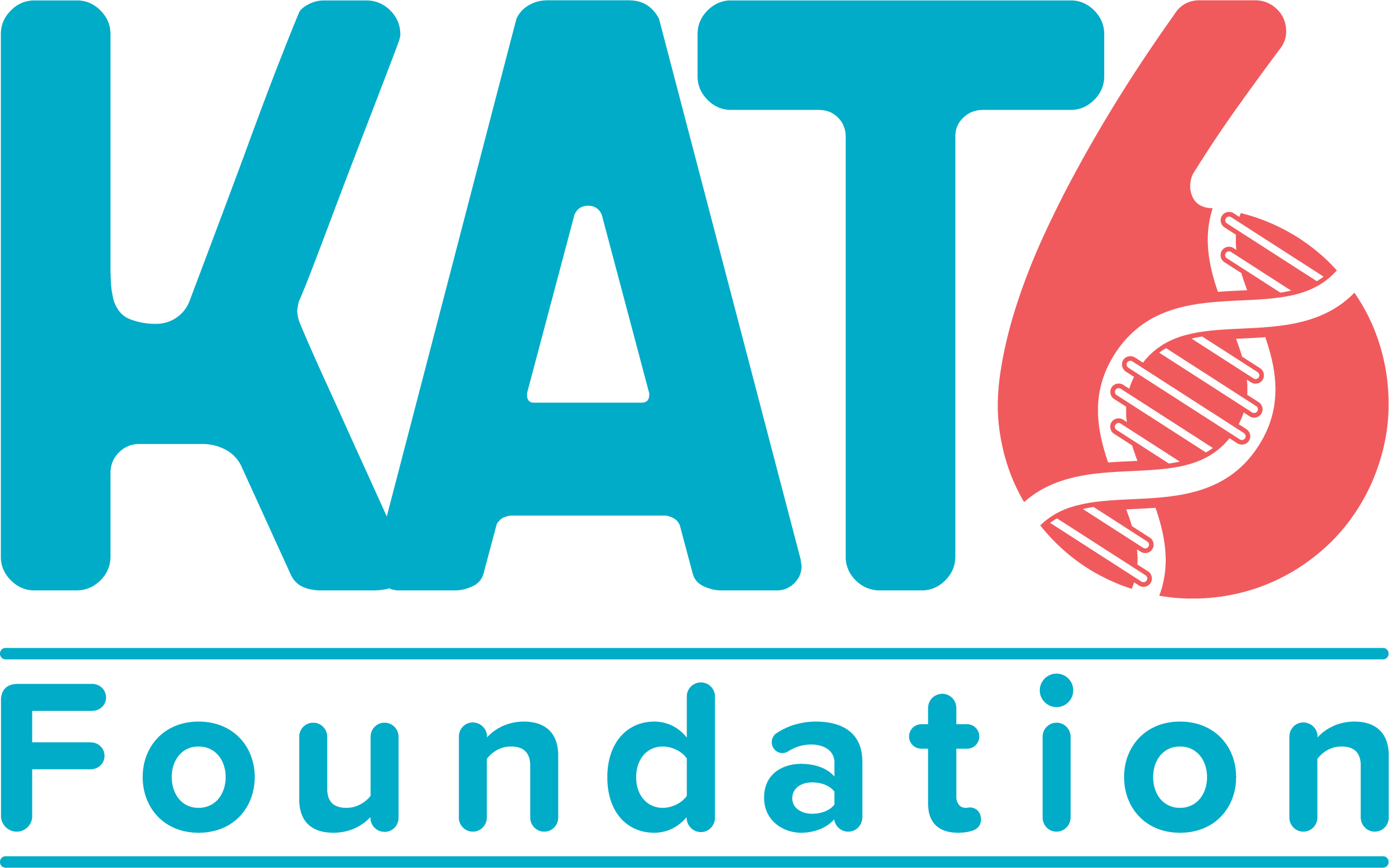
Pilar Jean is the mother of Victoria. They live in Palma de Mallorca, Spain with their family. Pilar is proud to share their experience using augmentative and alternative communication (AAC) with the KAT6 community.
Our daughter Victoria, 11 years old, lacks verbal communication and since we started to use assistive technology and working with her following the AAC approach , she is much more communicative and happier. She produces many more sounds. We would like to share our experience with all families in the community.
Victoria started to use an eye tracker (4C Tobii eye-tracker)on a computer both at school and with her private speech therapist. At school it was used with activities from the website, Helpkidzlearn, and in private speech therapist with the program, Look to learn. Both at school and in private sessions games from the Grid3 program were used. The aim was for her to start focusing her gaze, follow objects in the screen and be able to choose between different items. At school she had twice a week a session of approximately 45 minutes, and in private she was seen once a week. After some time we decided to buy Grid 3 for use at home, subscribed by Helpkidzlearn and got a free trial of Look to learn to use home and do some practice whenever possible. We soon realized that all that she was learning was taken to real life as she was every time more alert and changed her way of looking at things. She would focus her gaze (hold her eyes on you or on tv, screen) follow objects (when playing or people moving in a certain room, at the street) and would choose what she wanted for breakfast or to wear to school. It was then when we decided to get Grid 3.
Next big step was working with pictograms (Spanish ARASAAC pictograms are great, you can also get them in many languages), she has never intended to get something by herself and from the time she was using pictograms she would extend her arm and get the pictogram, even the smaller ones. This training took some time and when she was familiarized with basic pictograms we decided she would have a communication book with pictograms to carry with her . She enjoyed that but it was not as good as the multimodal communicator on the Ipad we use now.
At present we have a communicator on an Ipad she carries to school and everywhere she goes. The approach we are using has been to use pictograms in real life situations (to ask for something, to describe something, to greet someone, to tell about routines and preferences, etc), complemented by fun activities she loves such as storytelling, games, and music. It has been a matter of teaching her how to use the communicator by modeling the language and also to teach relatives and people who spend quite a lot of time with her the same. She is able to communicate many things, being my favorite one ” I love you”. Here’s a list of the things she can do:
- Basic needs (I want more, enough, change diapers, come here, I am hungry , I am thirsty)
- Talk about herself and answer questions about herself (name, age, likes, where she lives, family tablet)
- Greetings and expressions (hello, good morning, good night, please, thank you, bon appetite!)
- Talk about her routines (activities, where does she go, and sequencing of routines: 1st wash my hands, 2nd wash my face, 3rd comb my hair)
- Make choices about what she wants to play and specifies which toys, what she wants to watch (cartoons, films) or music to listen to.
- Answers basic questions related to the vocabulary used in tales or games numbers, colors, animals, fruit, vegetables, food, weather, clothes, parts of the body, nature, sports and hobbies, shopping)
- Answering YES or NO
- Expressing likes and dislikes, talk about her feelings.
AAC has helped Victoria to have:
- increased autonomy and stronger friendships
- richer, more frequent social interactions
- increased autonomy and decision-making power over her own life
- more respect from others
- greater participation in our family lives and community
- improved mental health
We strongly believe in the future of AAC. It does not limit communication, on the contrary it improves it. And most important to us, it is a way of being included in society. We all have things to say although we may need different tools to communicate.
Victoria still needs someone to hold the Ipad for her or approach it to her, we would like her to grab it and use it. That is our next target.
Some tips for families who may be interested:
– Ask a speech therapist for an opinion and look for a speech therapist specialized in this field.
– School, family and speech therapist should work together and use the same code for communicating and the same approach.
– Integrate communication in real life situations.
– Get involved with other families who use AAC and share your experiences ( there are many FB groups on this topic).
We would like to thank Mar, Elvira , Alicia and Maria (Victoria’s teachers at special needs school Mater Misericordiae, Palma) and Rayco ( Fundación Nemo) for all their hard work and support.


